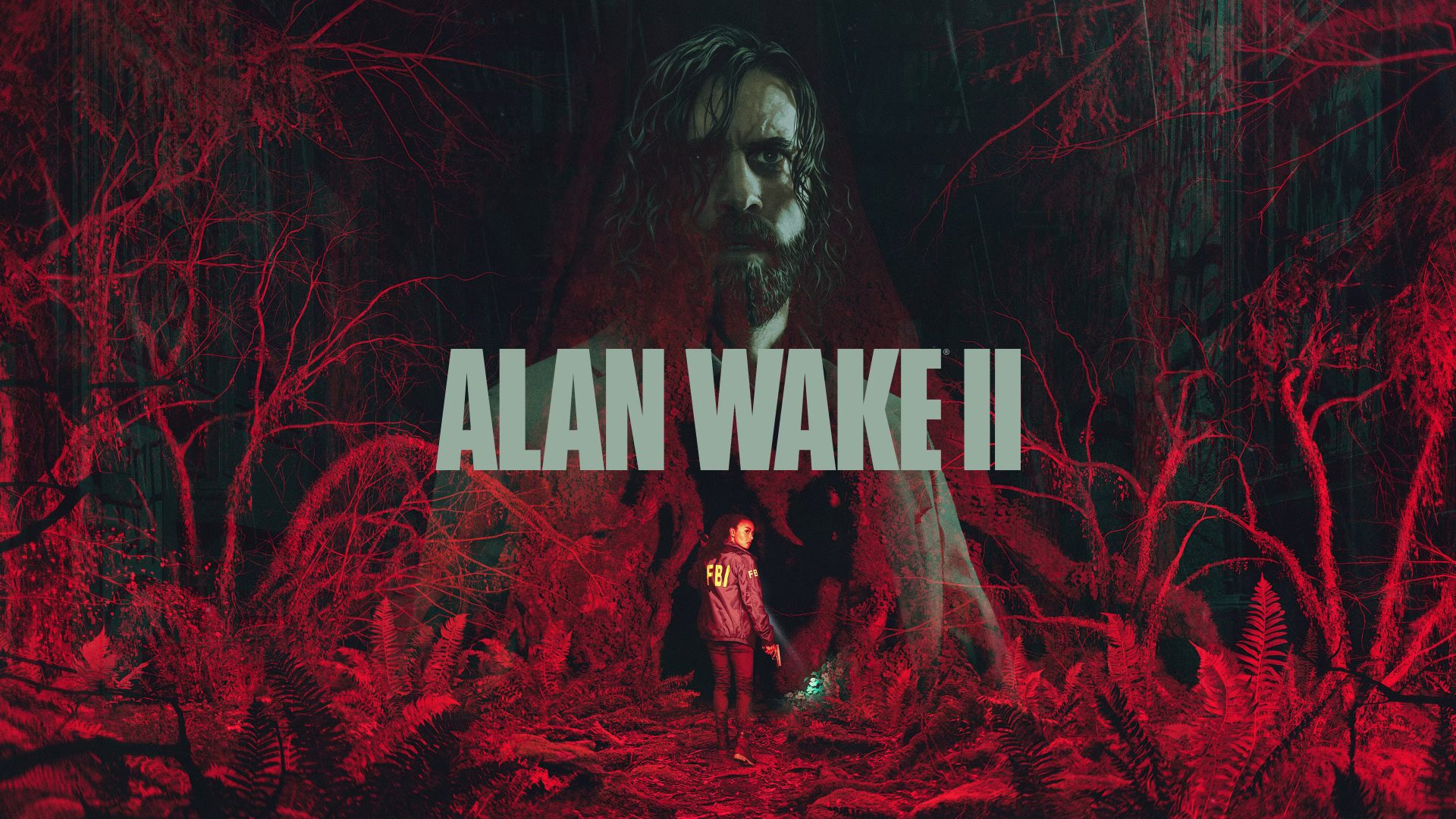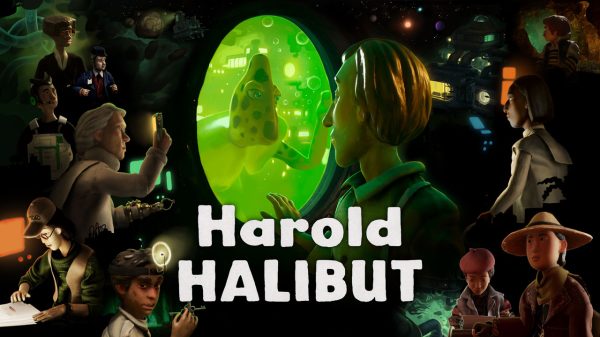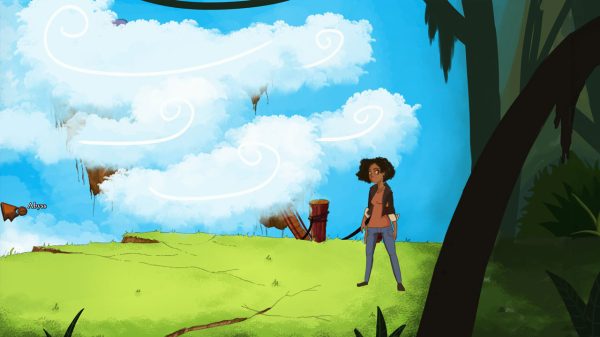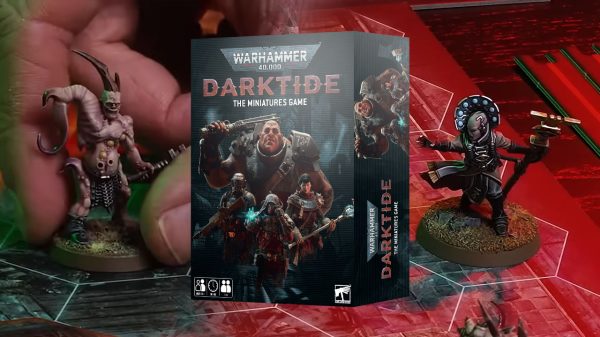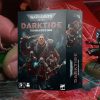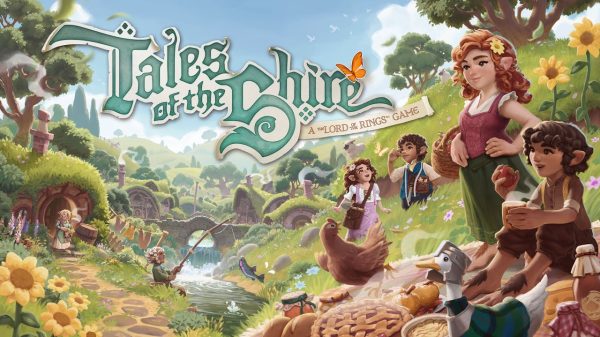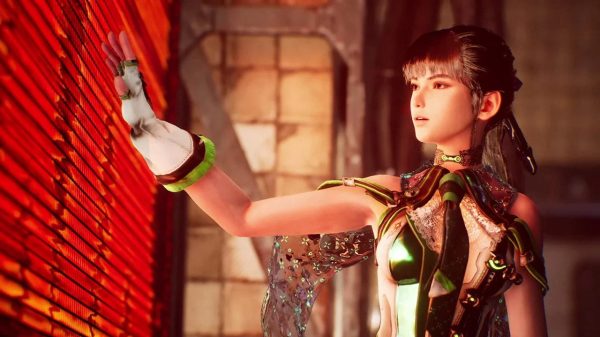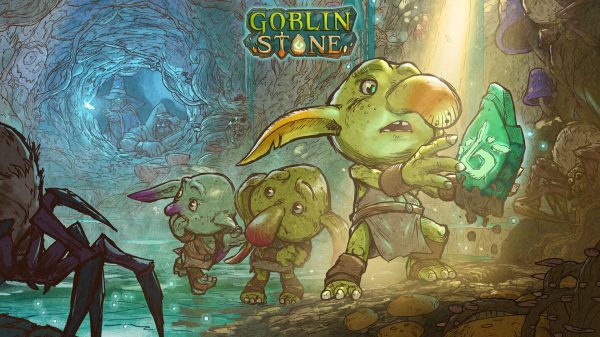Releasing a direct sequel to a game with a cult following 13 years after the original is one hell of a bold swing by Remedy Entertainment, especially as its riding the momentum gathered by the certifiable hit that is Control. While a small (yet vocal) few never gave up hope for a return from the haunted writer and his flashlight, enough time had passed that many assumed Alan Wake would forever be trapped in the Dark Place. As unlikely as it once seemed, the clacks of a typewriter can be heard echoing from Cauldron Lake once more, though much has changed. Alan Wake II tears up the manuscript and rewrites itself as a true survival horror experience, reinvigorating the long-dormant narrative and fully interweaving it into Remedy’s new shared universe in the process.
As in our world, 13 years have passed since the tortured author Alan Wake found himself trapped in the Dark Place, having freed his wife from the demonic clutches of the Dark Presence. We begin with FBI Agent Saga Andersen arriving at Bright Falls, investigating the latest in a line of ritualistic murders that leave the victims with their hearts ripped out and bodies covered in illegible inscriptions. Alongside her partner, the stoic and hardboiled detective Alex Casey (portrayed by Sam Lake), we control Saga as she investigates the gruesome crime scene, gathering evidence that will slowly paint a picture of events.
Mentally cataloguing the discovered clues, Saga is able to retreat to her Mind Place, a metaphysical recreation of the duo’s base of operations in Bright Falls. At the press of a button, the player can instantly move into the Mind Place to pin evidence to a case board, incrementally solving the various mysteries, while also acting as a means to remind you of your progress. From here, Saga is also able to profile individuals that she meets, analysing their true motivations and reading their intentions in a manner that borders on precognition. Pinning evidence to the board is occasionally necessary to progress, however, I found myself frequently returning to the Mind Place to debrief and collate my clues, if only to live out the detective fantasy.

Bright Falls would be a great holiday destination, minus the living nightmares and cultists
Despite the inherent eeriness that comes with investigating a murder cult, the opening hour of Saga’s gameplay is reasonably grounded, with walking, talking and deducting setting the scene. It doesn’t take long for everything to take a drastic turn into the obscure, as we find the titular writer washed up on the shore of Cauldron Lake, 13 years after he mysteriously disappeared. Alan appearing in the wake of the most recent murder is more than a coincidence for Andersen, and it becomes apparent that the two are intrinsically linked.
The plot only thickens from there, as following a supernatural event in the morgue under the local police office, our perspective shifts to Alan Wake, imprisoned in the Dark Place, frantically trying to escape through his writing. While Saga’s escapades in Bright Falls progressively descend into madness over the course of the 18-hour story, Wake’s half of the adventure lives and breathes in the surreal. The Dark Place takes the form of New York, Wake’s one-time home, with the neon lights of diners and theatres piercing through the otherwise all-encompassing blackness. This shadowy dimension may wear the guise of a real-world location, but the ever-present shadow figures wandering the empty streets and Wake’s inner thoughts, scrawled onto the city walls in the form of graffiti, ensure a constant sense of unease.
As the Dark Place feeds off creativity, turning fiction into reality, his only hope of escape is his writing. Where Saga has her Mind Place, Alan has his Writer’s Room, a manifestation of his inner thoughts, where he can rewrite reality around him. By collecting narrative threads from his own series of Alex Casey detective novels found within the Dark Place, Alan can apply them to his surroundings, changing the physical space and aiding in puzzle-solving and traversal.

This is where the magic happens
Adding to the more puzzle-heavy aspects of Alan’s gameplay is the Angel Lamp, a tool found within the Dark Place that has connections to The Clicker, a McGuffin that played a large role in the first game. Wake can use the lamp when near a light source, capturing the luminescence and transforming the area that it once embraced. Often revealing new pathways, or uncovering previous non-existent details in the environment, the Angel Lamp not only provides more mechanical depth to the puzzle solving, but it adds to the palpable otherworldly aura of the Dark Place.
Save for the initial switch that happens without prompting, you’re free to change between Saga and Alan’s stories at any time when visiting a safe room. The two protagonists are fundamentally connected, with their paths intersecting across realities throughout the game, and you’re free to explore those paths however you please. Saga’s detective work will have you piecing together a mystery, while Wake goes about creating his own to break free from his horrific confinement. Both stories are segmented into chapters and bookended by a musical interlude, giving you the perfect opportunity to explore the other’s current situation, but if you want to fill in the case board, or continue working through a manuscript, you won’t be punished for doing so.
Blending together Saga and Alan’s actions, the overall story is part True Detective, part Twin Peak, and in the same breath, completely its own. Filled with twists and revelations at every juncture, the surreal happenings and horrific nightmares are offset by campy conversations, oddball characters and entire sequences that had me slack-jawed in surprise. I can’t even allude to certain story beats without ruining a surprise, but I say with certainty that I was completely invested in Alan’s plight, Saga’s investigation and the connective tissue that binds the two together. This is a sequel, and having knowledge of the first game, as well as the events of Control will enhance your enjoyment without a doubt, but Saga is new to this world, and acts as the perfect audience surrogate.

Yeah, I would want a spotlight, not a flashlight
Cultists hiding their faces behind threatening deer masks, malevolent shadow men lurking in the Dark Place and other horrors stand between Alan and his freedom and Saga and her answers. Expanding on the combat found in the original, both protagonists are equipped with a flashlight and a range of weapons to fend off the interdimensional threats. Most enemies will need to be weakened by shining a direct beam of light at them before they can be dispatched with a handgun, shotgun, crossbow, or any of the various other firearms that can be collected. The gunplay here isn’t as tight as Control, but there’s a good variety to the weapons and they all carry considerable weight. Resources are perfectly scarce, leaving you with enough bullets, flares and life-saving trauma patches to scrape by, and no more. Admittedly, the dodge mechanic, which should be your saving grace in hairy situations, does feel a bit off, but it’s a fairly negligible gripe.
The combat doesn’t need to be perfect, though, as it’s not the game’s primary focus. Enemy encounters are used sparingly, with the game’s incredible atmosphere doing more to build tension than any deranged cultist could hope to. Bright Falls, Cauldron Lake and the nearby town of Watery are all caught in a never-ending sunset that casts threatening shadows in every direction. The Dark Place is an ever-shifting dreamscape that fuses fiction with reality, resulting in unsettling, impossible environments that put Alan, and the player, on edge. The only time my heart rate was given some reprieve was during one scripted scene, where things got a little too hectic and I couldn’t quite find where I was going, but the moment was fleeting and my pulse was pounding again soon after.
Elevating the atmosphere to a pulse-pounding high is the audio design. The forest surrounding Bright Falls creaks and cracks in the darkness, the wind blowing menacingly through the limbs of the trees. Floorboards ache as you step through dilapidated buildings, diegetic music distorts in uncomfortable ways within the Dark Place, while the walking shadows whisper Alan’s name. The absence of combat, combined with the unbelievable atmosphere, built a level of tension that I’ve felt in very few horror games in the past.
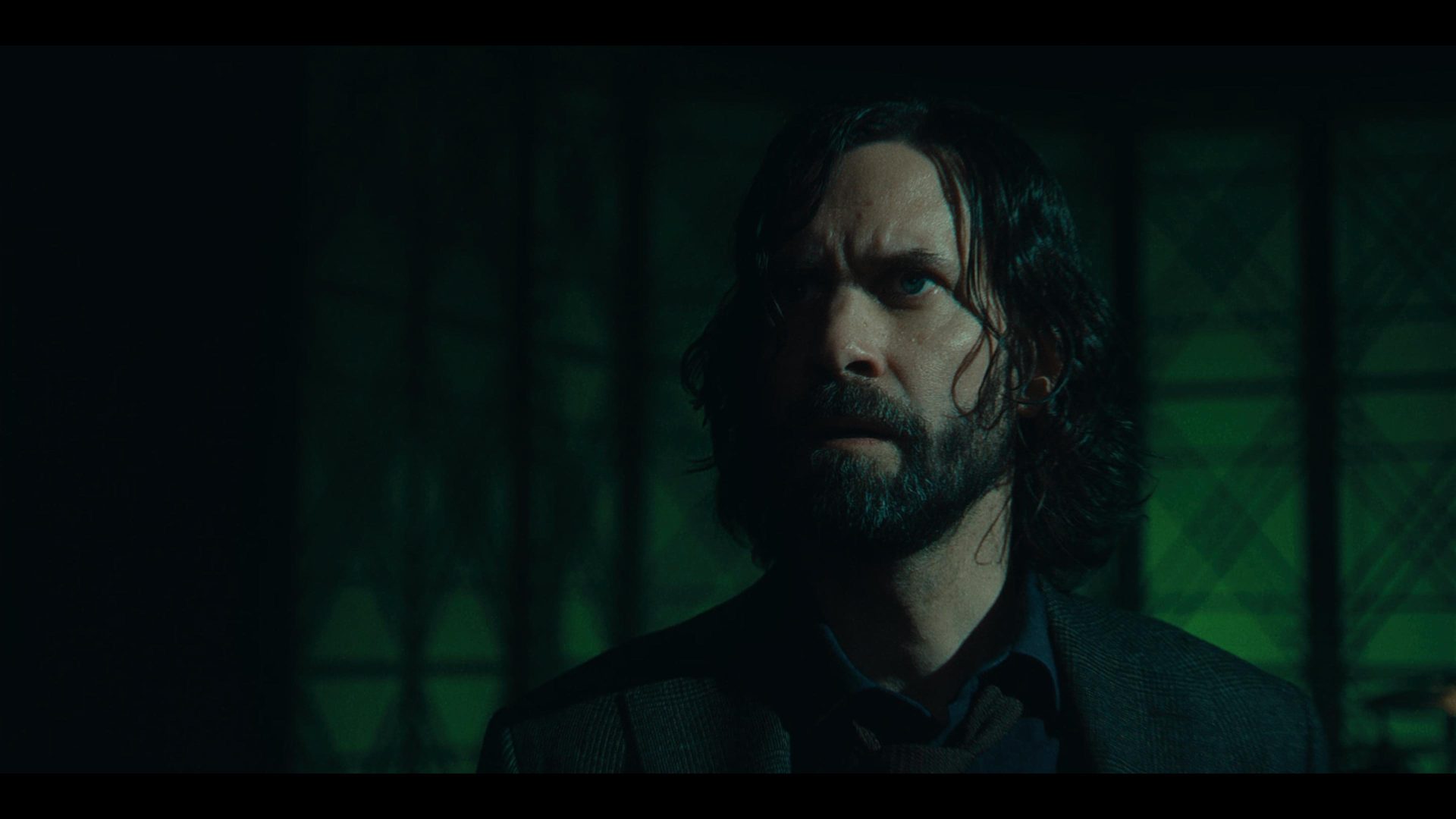
Ilkka Villi’s performance as Wake is convincing and erratic
While often horrific, the visuals are insanely beautiful, whether you’re using the fidelity or performance options. The warm tones reflecting on the water in Bright Falls, the colourful neon signs that glisten through the fog in the Dark Place, and the sheer graphical fidelity consistently blew me away. As with other Remedy games, live-action cutscenes are spliced into the story. These could so easily have been corny and jarring, but the direction and amazing performances ensured that each and every scene landed. In fact, I often found myself looking forward to Alan’s next surreal visit to Mr Door’s talk show.
Final Thoughts
Creating a sequel to a 13-year-old cult favourite that moves into a new genre, creates connections to a shared universe and introduces a new protagonist is a significant gamble. If Alan Wake II was released and managed to be ‘good,’ many would see that as a win for Remedy, but this game is so much more than that. Unashamedly strange and wonderfully unique, Alan Wake II is one of the finest survival horror games I’ve played, and it’s one of the best games I’ve played in recent memory. An insane narrative, told from the perspective of two equally intriguing characters that are brought to life with convincing performances, accompanied by tense, engaging gameplay that evolves over the course of the game. Without hesitation, I can say that the 13-year wait was worth it in every way.
Reviewed on PS5 // Review code supplied by publisher
Click here for more information on WellPlayed’s review policy and ethics
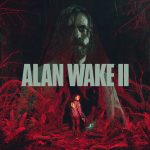
- Remedy Entertainment
- Epic Games Publishing
- PS5 / Xbox Series X|S / PC
- October 27, 2023



Adam's undying love for all things PlayStation can only be rivalled by his obsession with vacuuming. Whether it's a Dyson or a DualShock in hand you can guarantee he has a passion for it. PSN: TheVacuumVandal XBL: VacuumVandal Steam: TheVacuumVandal





